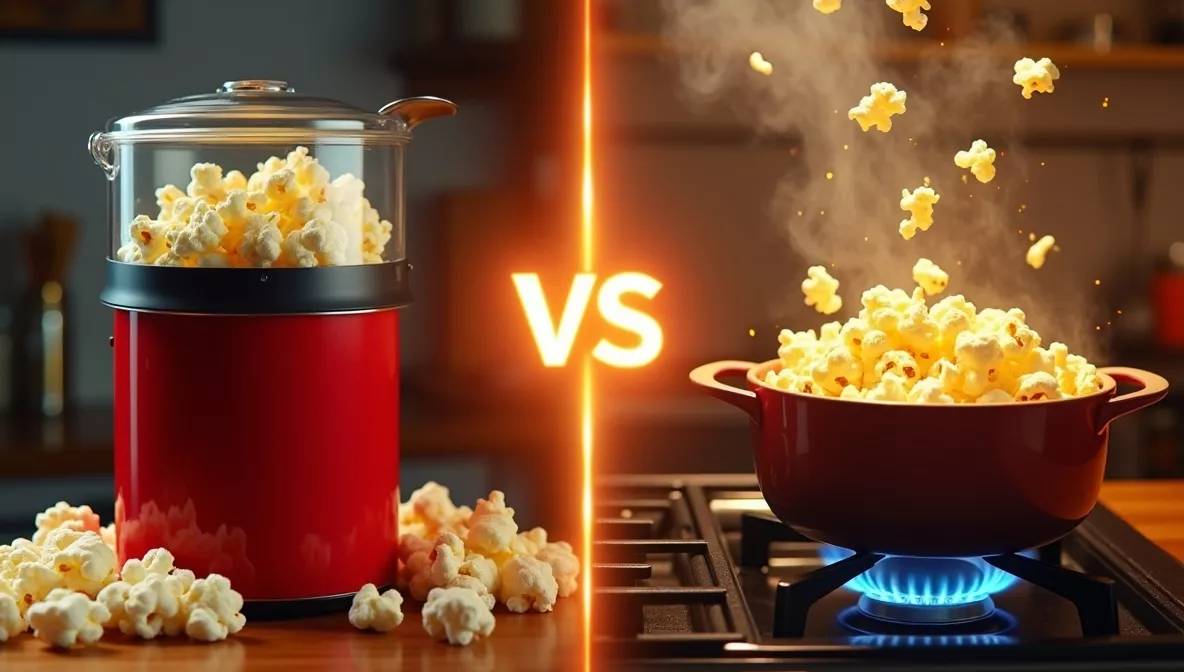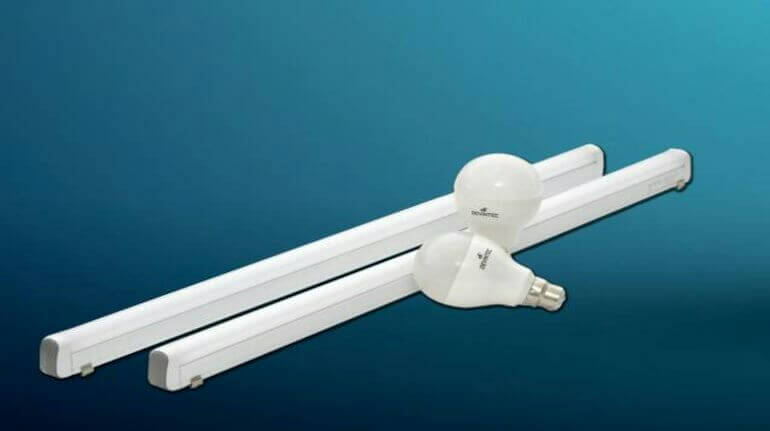Look, I’ve been making popcorn for years.
- The Question Everyone’s Actually Asking
- My Stovetop Popcorn Wake-Up Call
- 💖 You Might Also Like
- What Makes Electric Popcorn Makers Different
- Stovetop Popcorn: The Underdog That Still Fights
- The Flavor Battle Nobody Talks About
- ✨ More Stories for You
- Speed: The Metric That Actually Matters
- The Health Question Everyone Pretends Doesn’t Matter
- Cost Breakdown: What You’re Really Paying For
- 🌟 Don't Miss These Posts
- Cleanup Reality Check
- When Electric Actually Makes Sense
- When Stovetop Is The Better Move
- The Middle Ground Option
- Common Problems With Electric Makers
- Common Problems With Stovetop
- My Actual Setup (What I Actually Use)
- Frequently Asked Questions
- The Verdict Nobody Wants to Hear
And I’m tired of pretending there’s some perfect answer here.
So let me break down electric popcorn maker vs stovetop popcorn the way nobody else will.
Real talk.
No BS.
The Question Everyone’s Actually Asking
“Should I spend money on a machine or just use what I already have?”
That’s what you really want to know.
Not some fancy comparison chart.
You want to know if that electric popcorn maker sitting in your Amazon cart is worth it.
Or if you’re just fine with your trusty pot.
Let me tell you what I learned the hard way.
My Stovetop Popcorn Wake-Up Call
I used to think stovetop was the only “real” way.
You know, authentic and all that.
Then I burned three batches in one week.
Wasted kernels.
Wasted oil.
Wasted time scraping burnt popcorn off my pot.
That’s when I started actually paying attention.
💖 You Might Also Like
What Makes Electric Popcorn Makers Different
Here’s the thing nobody tells you.
Electric makers aren’t just “convenient.”
They’re consistent.
The big wins:
- Set temperature control (no more burnt batches)
- Timer functions that actually work
- Less babysitting required
- Built-in butter melting (on most models)
- Easier cleanup than you’d think
But here’s what they DON’T tell you in the marketing.
They take up counter space.
Another appliance to store.
Another thing that can break.
Stovetop Popcorn: The Underdog That Still Fights
I’m not here to trash stovetop methods.
Because honestly?
When you nail it, stovetop popcorn hits different.
What stovetop does better:
- Total control over heat and oil
- Better flavor possibilities (I’ll explain why)
- Works during power outages
- No equipment investment needed
- That satisfying shake-shake-shake rhythm
The catch?
You need to actually learn the technique.
Most people never do.
They just wing it and wonder why half the kernels don’t pop.
The Flavor Battle Nobody Talks About
This is where things get interesting.
Electric popcorn makers are cleaner.
Stovetop is richer.
Why?
Oil.
When you make stovetop popcorn, the kernels pop IN the oil.
Every piece gets coated.
Electric makers either use hot air (zero oil) or minimal oil at the bottom.
The result?
Stovetop tastes buttery and rich without adding butter.
Electric tastes… lighter.
Cleaner.
Some people love that.
I’m not one of them.
✨ More Stories for You
Speed: The Metric That Actually Matters
Let’s time this out.
Electric popcorn maker:
- Plug in: 5 seconds
- Add kernels: 15 seconds
- Wait: 3-4 minutes
- Total: About 4 minutes
Stovetop popcorn:
- Get pot and oil: 30 seconds
- Heat oil: 2 minutes
- Pop kernels: 3-4 minutes
- Clean pot: 3 minutes
- Total: About 9 minutes
Electric wins on speed.
By a lot.
But that assumes you leave your electric maker on the counter.
If you store it in a cabinet, add 2 minutes to dig it out.
The Health Question Everyone Pretends Doesn’t Matter
Air-popped electric makers are the healthiest option.
Period.
Zero oil.
Zero extra calories.
Just popped corn.
But let’s be honest.
Nobody eats plain air-popped corn and thinks “wow, this is amazing.”
You’re going to add butter anyway.
Or oil.
Or cheese powder.
Or whatever.
So the health advantage disappears fast.
Stovetop lets you control exactly what oil you use.
Coconut oil.
Avocado oil.
Olive oil.
Whatever fits your diet.
With electric makers, you’re limited by the machine’s design.
Cost Breakdown: What You’re Really Paying For
Electric popcorn maker investment:
- Basic hot air popper: $20-30
- Mid-range machine: $40-80
- Theater-style maker: $100-200
- Lifespan: 2-5 years typically
Stovetop setup:
- Heavy-bottom pot you already own: $0
- Good pot if buying new: $30-50
- Lifespan: Decades
The math is simple.
Stovetop is cheaper long-term.
Unless you factor in burnt batches and wasted kernels while learning.
Then it evens out.
🌟 Don't Miss These Posts
Cleanup Reality Check
This is where people lie to you.
“Electric makers are SO easy to clean!”
Some are.
Most aren’t.
Electric maker cleanup:
- Unplug and cool: 10 minutes
- Wipe interior: 2 minutes
- Wash removable parts: 3 minutes
- Deal with kernel shells everywhere: Forever
Stovetop cleanup:
- Wash one pot: 2 minutes
- Wipe stove: 1 minute
- Done
Stovetop actually wins here.
Unless you burn it.
Then you’re scrubbing for 15 minutes.
When Electric Actually Makes Sense
I’m not anti-electric.
I own one.
Here’s when it’s worth it:
- You make popcorn multiple times per week
- You have kids who want to “help” (safer than stovetop)
- Counter space isn’t an issue
- You prefer air-popped style
- You’re willing to sacrifice some flavor for consistency
The convenience factor is real.
Especially on movie night when you just want to hit a button.
When Stovetop Is The Better Move
Stick with stovetop if:
- You only make popcorn occasionally
- Flavor matters more than convenience
- You hate single-use appliances
- You’re comfortable with active cooking
- You want full control over ingredients
Plus, stovetop popcorn impresses people.
There’s something about making it “from scratch” that hits different.
The Middle Ground Option
Here’s what nobody considers.
Get a microwave popcorn popper.
Silicone bowl.
Twenty bucks.
No oil needed but you can add some if you want.
Fast like electric.
Simple like stovetop.
Stores flat.
I use mine more than my actual electric maker.
Just saying.
Common Problems With Electric Makers
Let me save you some frustration.
Issues I’ve dealt with:
- Unpopped kernels pile up in weird spots
- Popcorn shoots out and lands everywhere
- Butter melting feature doesn’t melt evenly
- Machine gets too hot and pops unevenly
- Cord storage is always annoying
These aren’t dealbreakers.
But nobody mentions them in reviews.
Common Problems With Stovetop
Fair is fair.
Stovetop struggles:
- Burning the first batch while learning
- Shaking your arm gets tired (real talk)
- Oil splatters on the stove
- Hard to season consistently
- Easy to overheat and scorch
Both methods have friction.
Pick your friction.
My Actual Setup (What I Actually Use)
Want to know what’s in my kitchen?
Both.
I keep a cheap hot air popper for weeknight convenience.
And I use stovetop on weekends when I have time to do it right.
The best tool is the one you’ll actually use.
For me, that’s situation-dependent.
Frequently Asked Questions
Is an electric popcorn maker worth buying?
If you eat popcorn twice a week or more, yes.
Otherwise, probably not.
Does stovetop popcorn taste better than electric?
Usually, yes.
The oil makes a difference.
But electric is more consistent.
How long do electric popcorn makers last?
2-5 years on average.
Cheap ones die faster.
Can you use butter in an electric popcorn maker?
Not in the popping chamber.
Only in designated butter melting trays.
Butter will damage the machine otherwise.
What’s healthier: electric or stovetop popcorn?
Air-popped electric has zero added fat.
But once you add butter, there’s no real difference.
Why does my stovetop popcorn burn?
Heat too high.
Or you stopped shaking the pot.
Medium heat and constant motion are key.
Do electric popcorn makers work without oil?
Hot air models do.
Stirring models need a small amount.
Check your specific machine.
How much popcorn can I make at once?
Electric makers: Usually 10-18 cups per batch.
Stovetop: Limited by pot size, usually 8-16 cups.
Can kids use an electric popcorn maker safely?
Safer than stovetop.
But the machine gets hot.
Supervision required either way.
What type of kernels work best?
Both methods work with any kernels.
Mushroom kernels are sturdier.
Butterfly kernels are more tender.
The Verdict Nobody Wants to Hear
There’s no universal winner in the electric popcorn maker vs stovetop popcorn debate.
It depends on what you value.
Speed and consistency?
Electric.
Flavor and control?
Stovetop.
I wish I could give you a cleaner answer.
But the truth is messier than that.
Get the tool that matches your life.
Not the tool that matches someone else’s YouTube review.
And whatever you choose?
Just make more popcorn.
Life’s too short for stale movie theater prices anyway.























